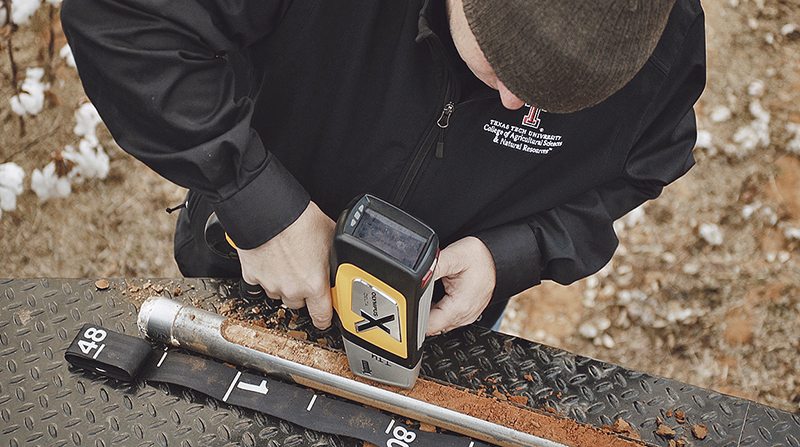Waiting two weeks for soil sample results sometimes just isn’t good enough, especially if you’re a producer, agronomist or researcher troubleshooting an elusive problem like salinity.
There are times when immediate on-site soil test results can be irreplaceable in solving these problems. That’s the opinion of most researchers, including David Weindorf of the plant and soil department at Texas Tech University.
Weindorf specializes in salinity and excess calcium, particularly in the yield-robbing form known as calcium carbonate. He spends a lot of his time probing soils on the Texas plains.
Read Also

Organic farmers urged to make better use of trade deals
Organic growers should be singing CUSMA’s praises, according to the Canadian Chamber of Commerce.
In a recent news release from the Soil Science Society of America, Weindorf says farmers sometimes face challenges concealed deep in the soil.
He says a portable field sensor can accurately measure minerals in soils more easily and efficiently than a spade and lab methods.
Minerals such as calcium are necessary for plant growth, but excess calcium carbonate can be counter-productive.
“Calcium carbonate is basically a type of salt. It dissolves in water after a rainfall event and moves down through the soil,” says Weindorf, explaining that limestone is a major source of calcium.
If the problem isn’t extreme yet, it makes thin threads or small white masses in the soil. Worst-case scenario, it takes over the entire subsoil region. Calcium’s hard surface impedes the penetration of the roots, so plants die. Traditionally, soil scientists use their expertise to visually determine the stage of the calcium in a field. They ground truth their findings with lab analysis, but that is time consuming. By the time they get the results, they might be working in a different corner of the state.
The Texans wanted to see if a portable device called a portable X-ray fluorescence spectrometry (PXRF) could give them accurate results quickly. By confirming the lab data on the ground, they determined that it gave them an accurate measurement of calcium in the soil. Not only that, but PXRF also provides data on 20 different elements, in 60 seconds.
When known X-rays are aimed at a target, the atoms emit fluorescent X-rays that are characteristic to its elemental composition.
New generation X-ray tubes and detector technology have sparked development of portable PXRF units the size of hair-dryers that can be transported as easily as soil scientists’ spades.
The speed and accuracy of the units mean that an agronomist trouble-shooting a specific piece of land can get soil test results in one minute, thus changing the time framework of precision agriculture. A farmer and his agronomist can be standing on a plot of problem ground and figure out a solution right then and there.
“We’re not advocating doing away with traditional assessment,” Weindorf says. “We’re providing a new data stream to help soil scientists when evaluating carbonates in the field. Essentially, PXRF is another tool in the tool belt of the modern soil scientist.”
















